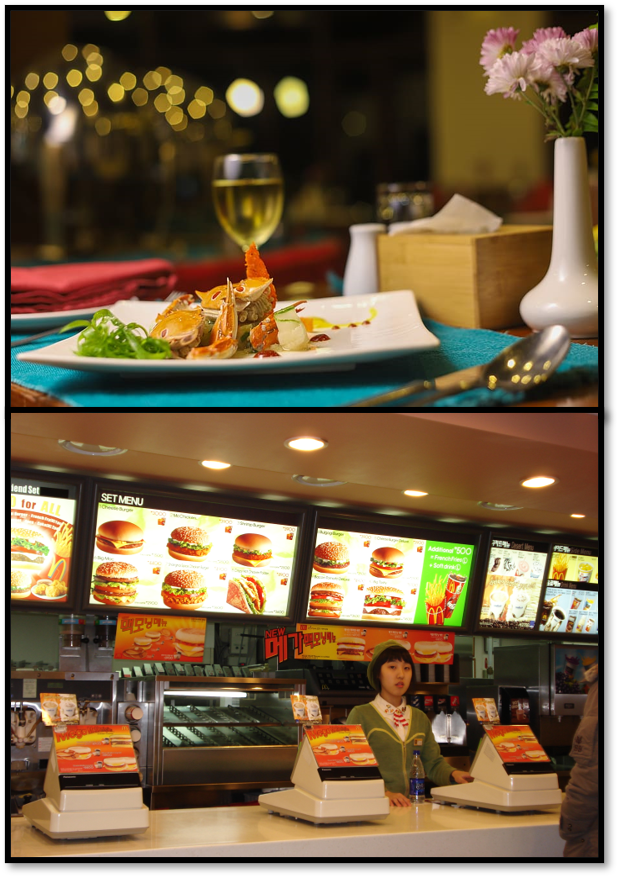Food and beverage (or food service) operations in the hospitality industry are concerned with the provision of food and drink ready for immediate consumption (but excluding retailing and food manufacturing).
Types of foodservice operations
Food and beverage (or food service) operations include various types of restaurants (bistros, brasseries, coffee shops, first-class/fine dining, ethnic, themed), cafés, cafeterias, takeaways, canteens, function rooms, tray service operations, lounge service operations, home delivery, operations and room service operations for hotel guests.
Commercial Food Service Commercial food service is the largest and most recognizable form of food service operation in the world, accounting for approximately 77% of food expenditures outside of people's homes. The main goal of commercial food service operations is to provide food and beverage to customers for profit and create positive guest experiences.
Commercial food service is the largest and most recognizable form of food service operation in the world, accounting for approximately 77% of food expenditures outside of people's homes. The main goal of commercial food service operations is to provide food and beverage to customers for profit and create positive guest experiences.
Non-Commercial Food Service
Noncommercial food service, prepares and serves meals as a secondary support service to educational institutions and other organizations.Source: Commercial & Noncommercial Food Service Operations. (2017, June 29). Retrieved from https://study.com/academy/lesson/commercial-noncommercial-food-service-operations.html.
The Meal Experience
There are many different kinds of food and beverage operation, designed to meet a wide range of demand. These different types of operation are designed for the needs people have at a particular time, rather than for the type of people they are. For example, a person may be a business customer during the week, but a member of a family at the weekend; they may want a quick lunch on one occasion, a snack while travelling on another and a meal with the family on another occasion. Additionally, the same person may wish to book a wedding or organise some other special occasion.
The main aim of food and beverage operations is to achieve customer satisfaction. In other words, to meet the customers’ needs. The needs that customers might be seeking to satisfy include:
- Physiological: for example, the need to sate one’s appetite or quench one’s thirst, or the need for special foods such as diabetic or vegetarian.
- Economic: for example, the need for good value; rapid, fast service; a convenient location.
- Social: for example, going out with friends or business colleagues; attending a function in order to meet others.
- Psychological: for example, the need for enhancement of self-esteem; fulfilling life-style needs; the need for variety; as a result of advertising and promotion.
- Convenience: for example, as a result of being unable to get home (shoppers, workers) or attending some other event (cinema, theatre); the desire for someone else to do the work; the physical impossibility of catering at home (weddings and other special functions).
The Meal Experience Factors
| Factor | Description |
|---|---|
| Food and Beverages on offer | Includes the range of foods and beverages, choice, availability, flexibility for special offers and the quality of the food and beverages. |
| Level of service | The level of service sought will depend on the needs people have at a particular time. |
| Level of cleanliness and hygiene | This factor relates to the premises, equipment and staff. Over the last few years this factor has increased in importance in customers’ minds. |
| Perceived value for money and price | Customers have perceptions of the amount they are prepared to spend and
relate this to differing types of establishments and operations. |
| Atmosphere of the establishment | This factor takes account of issues such as design, decor, lighting, heating, furnishings, acoustics and noise levels, other customers, the smartness of the staff and the attitude of the staff |
